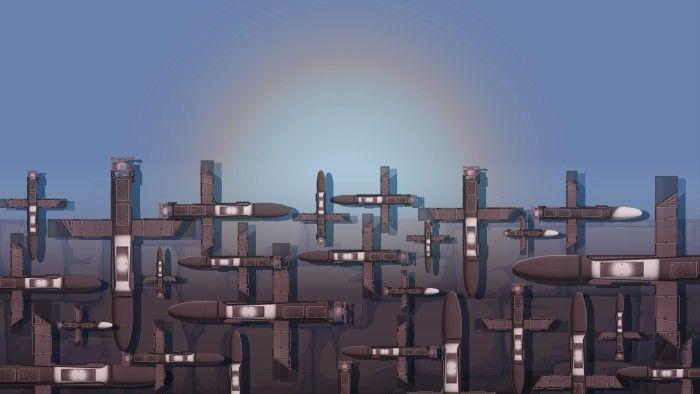Ukraine's Defense Industry Revolutionizes Warfare with AI and Robotics Amid Ongoing Conflict
3 Sources
3 Sources
[1]
How 1,000 days of conflict fuelled robot wars between Russia and Ukraine
KYIV (Reuters) - When Yuriy Shelmuk co-founded a company last year making drone signal jammers, he said there was little interest in the devices. It now produces 2,500 a month and has a six-week waiting list. Demand shifted after the failure of a major Ukrainian counteroffensive in the summer of 2023 that was meant to put invading Russian forces on the back foot. Kyiv cited Russia's extensive use of unmanned aerial vehicles to spot and strike targets, as well as vast numbers of landmines and troops. "Concentrated, cheap aerial drones stopped all our assaults," Shelmuk said. "There was an understanding that a new game changer had appeared." The vast majority of more than 800 companies in Ukraine's burgeoning defence production sector were founded after Russia's 2022 full-scale invasion that enters its 1,000th day on Tuesday. Many were set up in response to rapidly evolving battlefield conditions, including drones - first in the skies and then also on land and at sea - as well as anti-drone technology and, increasingly, artificial intelligence. "The Ukrainian military-industrial sector is the fastest innovating sector in the entire world right now," said Halyna Yanchenko, a Ukrainian lawmaker who has advocated for local arms manufacturers in parliament. Both Ukraine and Russia are on track to make around 1.5 million drones this year, mostly small "first-person view" vehicles that cost a few hundred dollars apiece and can be piloted remotely to identify and attack enemy targets. In February, Ukrainian troops were already telling Reuters that the preponderance of Russian drones made it harder for them to move around freely and build fortifications. By summer, as Russia began taking Ukrainian territory at the fastest rate since the early days of the conflict, most battered military pickup trucks sported electronic warfare (EW) domes that would have only been put on high-value equipment last year. Shelmuk's company, Unwave, is one of some 30 firms manufacturing such systems, which block signals and use various means to disrupt computer systems inside drones. Most anti-drone EW systems jam one, or at best a small handful of radio frequencies, meaning Russian drone pilots can sidestep jamming by hopping on to a new frequency. EW makers thus monitor Russian drone-related online chats to understand which frequencies their drones will use. 'WAR OF ROBOTS' As losses mount and exhaustion sets in, both sides in the war are trying to replace humans with machines. Ukraine has struggled to replenish units depleted over time by fighting; Russia has reportedly turned to North Korea. Seven officials and industry figures told Reuters automation would be the main focus of battlefield innovation in the coming year. "The number of infantrymen deployed in trenches has decreased significantly, and combat command is possible to do online from a remote point, which reduces the risk of personnel being killed," said Ostap Flyunt, an officer in the 67th mechanised brigade. Ukraine now has more than 160 companies building unmanned ground vehicles, according to state-backed defence accelerator Brave1. They can be used to deliver supplies, evacuate wounded or carry remotely operated machine guns. An army colonel, callsign Hephaestus, recently left the military to start building automated machine gun systems. He said six of his products were already substituting human gunners on the front, allowing them to operate the weapons on a screen far away from danger. Flyunt said this was increasingly common: "Modern war is a confrontation of technologies for detection, jamming, and destruction at a distance, leaving to the operator only the ability to make decisions about strikes," he said. Arms minister Herman Smetanin also said remote warfare, including using artificial intelligence, was on the increase. "In the near future, this will be the main direction of development, the war of robots," he told Reuters. "It's about people's lives, we need to protect them." Ukraine hopes an innovative defence sector will provide a new foundation for an economy devastated by the invasion. The country has poured $1.5 billion into upgrading defence manufacturing which had stagnated since Soviet times, arms minister Smetanin said, although it still relies on Western allies for shells, missiles and air defences. Defence production capacity has grown from $1 billion in 2022 to $20 billion in 2024, but Ukraine can only afford to buy about half of that, the minister said, leaving the extra manufacturing capacity unused. Some manufacturers complain of strict limits on profit margins and a lack of long-term state procurement contracts - an issue President Volodymyr Zelenskiy has said he intends to address. Four companies Reuters spoke to also said they struggled to find enough qualified staff. Kateryna Mykhalko, director of Tech Force in UA, an association of private defence manufacturers, said 85% of 38 firms surveyed by her organisation were either considering relocating operations abroad or had already done so. The thorniest issue for many is a wartime ban on arms exports that companies want repealed in order to generate capital for expansion. Officials are concerned about public disapproval of an aid-dependent country at war exporting arms. (Reporting by Max Hunder; Editing by Mike Collett-White and Philippa Fletcher)
[2]
Analysis-How 1,000 Days of Conflict Fuelled Robot Wars Between Russia and Ukraine
KYIV (Reuters) - When Yuriy Shelmuk co-founded a company last year making drone signal jammers, he said there was little interest in the devices. It now produces 2,500 a month and has a six-week waiting list. Demand shifted after the failure of a major Ukrainian counteroffensive in the summer of 2023 that was meant to put invading Russian forces on the back foot. Kyiv cited Russia's extensive use of unmanned aerial vehicles to spot and strike targets, as well as vast numbers of landmines and troops. "Concentrated, cheap aerial drones stopped all our assaults," Shelmuk said. "There was an understanding that a new game changer had appeared." The vast majority of more than 800 companies in Ukraine's burgeoning defence production sector were founded after Russia's 2022 full-scale invasion that enters its 1,000th day on Tuesday. Many were set up in response to rapidly evolving battlefield conditions, including drones - first in the skies and then also on land and at sea - as well as anti-drone technology and, increasingly, artificial intelligence. "The Ukrainian military-industrial sector is the fastest innovating sector in the entire world right now," said Halyna Yanchenko, a Ukrainian lawmaker who has advocated for local arms manufacturers in parliament. Both Ukraine and Russia are on track to make around 1.5 million drones this year, mostly small "first-person view" vehicles that cost a few hundred dollars apiece and can be piloted remotely to identify and attack enemy targets. In February, Ukrainian troops were already telling Reuters that the preponderance of Russian drones made it harder for them to move around freely and build fortifications. By summer, as Russia began taking Ukrainian territory at the fastest rate since the early days of the conflict, most battered military pickup trucks sported electronic warfare (EW) domes that would have only been put on high-value equipment last year. Shelmuk's company, Unwave, is one of some 30 firms manufacturing such systems, which block signals and use various means to disrupt computer systems inside drones. Most anti-drone EW systems jam one, or at best a small handful of radio frequencies, meaning Russian drone pilots can sidestep jamming by hopping on to a new frequency. EW makers thus monitor Russian drone-related online chats to understand which frequencies their drones will use. 'WAR OF ROBOTS' As losses mount and exhaustion sets in, both sides in the war are trying to replace humans with machines. Ukraine has struggled to replenish units depleted over time by fighting; Russia has reportedly turned to North Korea. Seven officials and industry figures told Reuters automation would be the main focus of battlefield innovation in the coming year. "The number of infantrymen deployed in trenches has decreased significantly, and combat command is possible to do online from a remote point, which reduces the risk of personnel being killed," said Ostap Flyunt, an officer in the 67th mechanised brigade. Ukraine now has more than 160 companies building unmanned ground vehicles, according to state-backed defence accelerator Brave1. They can be used to deliver supplies, evacuate wounded or carry remotely operated machine guns. An army colonel, callsign Hephaestus, recently left the military to start building automated machine gun systems. He said six of his products were already substituting human gunners on the front, allowing them to operate the weapons on a screen far away from danger. Flyunt said this was increasingly common: "Modern war is a confrontation of technologies for detection, jamming, and destruction at a distance, leaving to the operator only the ability to make decisions about strikes," he said. Arms minister Herman Smetanin also said remote warfare, including using artificial intelligence, was on the increase. "In the near future, this will be the main direction of development, the war of robots," he told Reuters. "It's about people's lives, we need to protect them." Ukraine hopes an innovative defence sector will provide a new foundation for an economy devastated by the invasion. The country has poured $1.5 billion into upgrading defence manufacturing which had stagnated since Soviet times, arms minister Smetanin said, although it still relies on Western allies for shells, missiles and air defences. Defence production capacity has grown from $1 billion in 2022 to $20 billion in 2024, but Ukraine can only afford to buy about half of that, the minister said, leaving the extra manufacturing capacity unused. Some manufacturers complain of strict limits on profit margins and a lack of long-term state procurement contracts - an issue President Volodymyr Zelenskiy has said he intends to address. Four companies Reuters spoke to also said they struggled to find enough qualified staff. Kateryna Mykhalko, director of Tech Force in UA, an association of private defence manufacturers, said 85% of 38 firms surveyed by her organisation were either considering relocating operations abroad or had already done so. The thorniest issue for many is a wartime ban on arms exports that companies want repealed in order to generate capital for expansion. Officials are concerned about public disapproval of an aid-dependent country at war exporting arms. (Reporting by Max Hunder; Editing by Mike Collett-White and Philippa Fletcher)
[3]
How 1,000 days of conflict fuelled robot wars between Russia and Ukraine
Ukrainian drone jammer manufacturers are seeing a surge in demand as the conflict with Russia intensifies. The war has spurred rapid innovation in Ukraine's defense sector, with a focus on drones, anti-drone technology, and AI-powered warfare.When Yuriy Shelmuk co-founded a company last year making drone signal jammers, he said there was little interest in the devices. It now produces 2,500 a month and has a six-week waiting list. Demand shifted after the failure of a major Ukrainian counteroffensive in the summer of 2023 that was meant to put invading Russian forces on the back foot. Kyiv cited Russia's extensive use of unmanned aerial vehicles to spot and strike targets, as well as vast numbers of landmines and troops. "Concentrated, cheap aerial drones stopped all our assaults," Shelmuk said. "There was an understanding that a new game changer had appeared." The vast majority of more than 800 companies in Ukraine's burgeoning defence production sector were founded after Russia's 2022 full-scale invasion that enters its 1,000th day on Tuesday. Many were set up in response to rapidly evolving battlefield conditions, including drones - first in the skies and then also on land and at sea - as well as anti-drone technology and, increasingly, artificial intelligence. "The Ukrainian military-industrial sector is the fastest innovating sector in the entire world right now," said Halyna Yanchenko, a Ukrainian lawmaker who has advocated for local arms manufacturers in parliament. Both Ukraine and Russia are on track to make around 1.5 million drones this year, mostly small "first-person view" vehicles that cost a few hundred dollars apiece and can be piloted remotely to identify and attack enemy targets. In February, Ukrainian troops were already telling Reuters that the preponderance of Russian drones made it harder for them to move around freely and build fortifications. By summer, as Russia began taking Ukrainian territory at the fastest rate since the early days of the conflict, most battered military pickup trucks sported electronic warfare (EW) domes that would have only been put on high-value equipment last year. Shelmuk's company, Unwave, is one of some 30 firms manufacturing such systems, which block signals and use various means to disrupt computer systems inside drones. Most anti-drone EW systems jam one, or at best a small handful of radio frequencies, meaning Russian drone pilots can sidestep jamming by hopping on to a new frequency. EW makers thus monitor Russian drone-related online chats to understand which frequencies their drones will use. 'WAR OF ROBOTS' As losses mount and exhaustion sets in, both sides in the war are trying to replace humans with machines. Ukraine has struggled to replenish units depleted over time by fighting; Russia has reportedly turned to North Korea. Seven officials and industry figures told Reuters automation would be the main focus of battlefield innovation in the coming year. "The number of infantrymen deployed in trenches has decreased significantly, and combat command is possible to do online from a remote point, which reduces the risk of personnel being killed," said Ostap Flyunt, an officer in the 67th mechanised brigade. Ukraine now has more than 160 companies building unmanned ground vehicles, according to state-backed defence accelerator Brave1. They can be used to deliver supplies, evacuate wounded or carry remotely operated machine guns. An army colonel, callsign Hephaestus, recently left the military to start building automated machine gun systems. He said six of his products were already substituting human gunners on the front, allowing them to operate the weapons on a screen far away from danger. Flyunt said this was increasingly common: "Modern war is a confrontation of technologies for detection, jamming, and destruction at a distance, leaving to the operator only the ability to make decisions about strikes," he said. Arms minister Herman Smetanin also said remote warfare, including using artificial intelligence, was on the increase. "In the near future, this will be the main direction of development, the war of robots," he told Reuters. "It's about people's lives, we need to protect them." Ukraine hopes an innovative defence sector will provide a new foundation for an economy devastated by the invasion. The country has poured $1.5 billion into upgrading defence manufacturing which had stagnated since Soviet times, arms minister Smetanin said, although it still relies on Western allies for shells, missiles and air defences. Defence production capacity has grown from $1 billion in 2022 to $20 billion in 2024, but Ukraine can only afford to buy about half of that, the minister said, leaving the extra manufacturing capacity unused. Some manufacturers complain of strict limits on profit margins and a lack of long-term state procurement contracts - an issue President Volodymyr Zelenskiy has said he intends to address. Four companies Reuters spoke to also said they struggled to find enough qualified staff. Kateryna Mykhalko, director of Tech Force in UA, an association of private defence manufacturers, said 85% of 38 firms surveyed by her organisation were either considering relocating operations abroad or had already done so. The thorniest issue for many is a wartime ban on arms exports that companies want repealed in order to generate capital for expansion. Officials are concerned about public disapproval of an aid-dependent country at war exporting arms.
Share
Share
Copy Link
As the Russia-Ukraine conflict reaches its 1,000th day, Ukraine's defense sector is rapidly innovating, focusing on drones, anti-drone technology, and AI-powered systems to counter Russian advances and reduce human casualties.

Ukraine's Defense Industry Boom
As the Russia-Ukraine conflict enters its 1,000th day, Ukraine's defense industry has undergone a remarkable transformation. Over 800 companies have emerged in the sector since Russia's full-scale invasion in 2022, with the majority focusing on cutting-edge technologies to counter evolving battlefield conditions
1
2
3
.The Rise of Drone Warfare
Both Ukraine and Russia are projected to produce approximately 1.5 million drones in 2024, primarily small "first-person view" vehicles costing a few hundred dollars each. These drones have become game-changers in the conflict, used for reconnaissance and attacks on enemy targets
1
2
.The impact of drones on the battlefield has been significant. Yuriy Shelmuk, co-founder of a drone signal jammer company, noted, "Concentrated, cheap aerial drones stopped all our assaults," highlighting their effectiveness in halting Ukrainian counteroffensives
1
.Anti-Drone Technology and Electronic Warfare
In response to the drone threat, Ukraine has seen a surge in companies developing anti-drone technologies. Shelmuk's company, Unwave, is one of about 30 firms manufacturing electronic warfare (EW) systems to counter drones
1
2
.These EW systems have become increasingly common on the battlefield. By summer, most military vehicles were equipped with EW domes, a significant change from the previous year when such technology was reserved for high-value equipment
1
3
.Automation and AI in Combat
As the conflict continues, both sides are turning to automation to reduce human casualties. Ukraine now has over 160 companies building unmanned ground vehicles for various purposes, including supply delivery, casualty evacuation, and remote-operated weapons systems
1
2
3
.An army colonel, known by the callsign Hephaestus, has developed automated machine gun systems that allow operators to control weapons from a safe distance. This trend towards remote warfare is expected to accelerate, with Arms Minister Herman Smetanin stating, "In the near future, this will be the main direction of development, the war of robots"
1
2
.Related Stories
Economic Impact and Challenges
Ukraine's defense sector is seen as a potential foundation for economic recovery. The country has invested $1.5 billion in upgrading its defense manufacturing capabilities, with production capacity growing from $1 billion in 2022 to $20 billion in 2024
1
2
3
.However, the industry faces several challenges:
- Limited domestic procurement: Ukraine can only afford to buy about half of its current production capacity
1
2
. - Staffing issues: Companies struggle to find qualified personnel
1
2
3
. - Export restrictions: A wartime ban on arms exports is hindering companies' ability to expand
1
2
3
.
Future Prospects
Despite these challenges, the rapid innovation in Ukraine's defense sector has positioned it as a leader in military technology. Halyna Yanchenko, a Ukrainian lawmaker, asserts, "The Ukrainian military-industrial sector is the fastest innovating sector in the entire world right now"
1
2
3
.As the conflict continues, the focus on AI, robotics, and remote warfare is likely to intensify, potentially reshaping the nature of modern combat and Ukraine's role in the global defense industry.
References
Summarized by
Navi
[1]
Related Stories
Recent Highlights
1
AI Chatbots Sway Voters More Effectively Than Traditional Political Ads, New Studies Reveal
Science and Research

2
Google AI glasses set to launch in 2026 with Gemini and Android XR across multiple partners
Technology

3
EU Launches Antitrust Probe Into Google's AI Training Practices and Content Usage
Policy and Regulation







